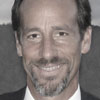When Stock Market Rallies Validate Effective Monetary Policy
In olden times, Federal Reserve Chairmen would devote themselves to safeguarding the dollar’s purchasing power, while giving almost no thought to the plight of the economy or the direction of the stock market. (In very olden times, Federal Reserve Chairmen did not even exist, which meant that America’s silver dollars had to safeguard their purchasing power all by themselves…without any help whatsoever from the Fed.)
Now comes Ben Bernanke, an academic with an obsession for the stock market. Bernanke knows he’s supposed to pursue a “dual mandate” of “maximum employment” consistent with “stable prices and moderate long-term interest rates.” This essentially impossible mandate is akin to pursuing maximum rice production, consistent with low water usage. The objectives clash head-on. But that’s a story for another day.
Our story for today is the mandate Ben Bernanke seems to be pursuing: playing the stock market. Based on his recent public remarks, Bernanke seems more obsessed with the stock market than a day trader.
He justifies his obsession by asserting that a rising stock market will produce rising employment. “Higher stocks prices will boost consumer wealth and help increase confidence, which can also spur spending,” the Chairman declared last November, the day after the Federal Open Market Committee formally christened QE2 – the second round of quantitative easing.
So far, so good.
“The US stock market’s total value has increased by over 25% – some $3.2 trillion – since Aug. 26,” Barron’s Randall Forsyth observes. “That date was prior to Federal Reserve Chairman Ben Bernanke’s speech to the central bank’s Jackson Hole, Wyo., policy pow-wow, when he first laid out the justification for the Fed’s purchases of Treasuries now known by all as QE2…”
Applauding his handiwork in a recent CNBC interview, Bernanke crowed, “Policies have contributed to a stronger stock market just as they did in March 2009, when we did the last iteration of [quantitative easing]. The S&P 500 is up 20%-plus and the Russell 2000, which is about small cap stocks, is up 30%-plus.”
In other words, Bernanke seems to countenance no distinction whatsoever between a rallying stock market and an effective monetary policy. In fact, as he sees it, the former is irrefutable proof of the latter.
One Wall Street analyst recently observed that the stock market is advancing “as if propelled by some mysterious force.” But the source is no mystery; it is Bernanke’s pedal-to-the-metal money printing that is powering the stock market higher…or at least helping to power it higher.
Bernanke openly admits to goosing the stock market – indirectly – for the purposes of advancing the nation’s collective good. Unfortunately, the results-to-date suggest that Bernanke’s meddling has merely advanced the nation’s selective good…like boosting net income at Goldman Sachs.
But after stripping away all the Bernanke-babble, what you find is a guy running a $1 trillion pump-and-dump scheme. He’s pumping up share prices in the hopes that something good – anything good – will result. And he says he will “withdraw liquidity” – i.e. dump Treasury bonds – once economic conditions improve.
Where’s all Bernanke’s money coming from? He makes it all by himself…sort of. It’s called quantitative easing, but it’s really just multisyllabic fraud. Quantitative easing creates money out of thin air, thereby undermining the value of the currency already in circulation.
Bernanke uses the money to buy Treasury bonds. The effect of this bizarre transaction is that one branch of the government issues debt securities, while another branch of the government purchases those securities. Seems like a pretty sweet deal. And it is…for as long as the market tolerates overt currency debasement.
Over the short run, Bernanke’s quantitative easing can appear to work wonders. Over the longer term, this game is likely to become much less wonderful. High single-digit inflation is a likely result. Low double-digit inflation is possible.
Triple-digit inflation? That couldn’t happen in the US could it?


Comments: